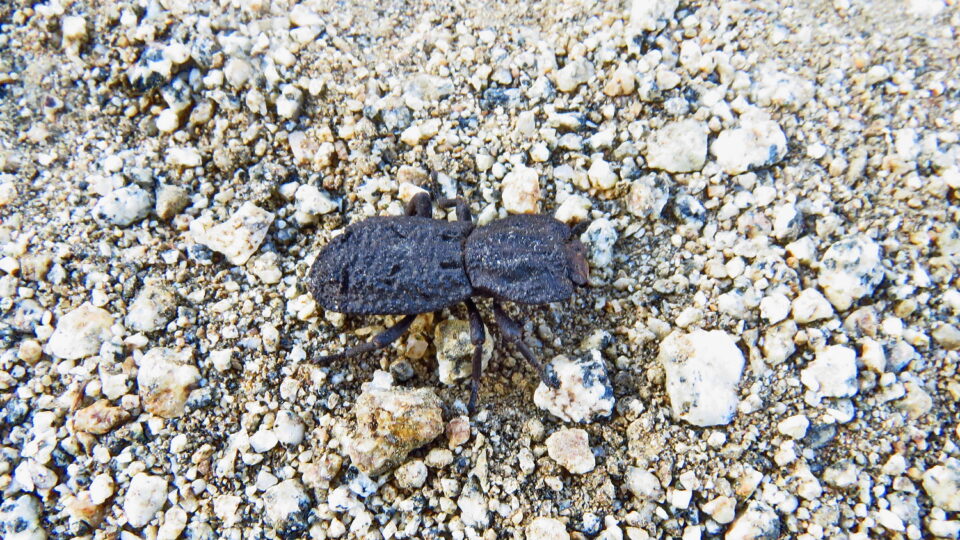In 2015, UC Riverside materials scientists placed a mottled black beetle in a parking lot and ran it over with a Toyota Camry. Twice. Crushed beneath the wheels of a 3,500-pound sedan, the inch-long insect made it through without a scratch.
For the past five years, a group of scientists have been studying this remarkable bug, which has the splendid name of the diabolical ironclad beetle. Using a combination of advanced microscopy, mechanical testing, and computer simulations, the researchers have figured out the secret of this beetle’s crush resistance.
The beetle’s super-toughness lies in two armorlike structures called elytra that meet in a line, called a suture, running the length of the abdomen. The suture acts like a jigsaw puzzle. It connects various exoskeletal blades – the puzzle pieces – in the abdomen under the elytra. These structural components can act in different ways. The interconnecting blades lock to prevent themselves from pulling out of the suture. The suture and blades delaminate, leading to a graceful deformation rather than catastrophic failure. These strategies dissipate energy to circumvent fracturing.
The researchers found that the diabolical ironclad beetle – just had to say that name again – can take on an applied force of about 150 newtons, a load at least 39,000 times its body weight. (That’s the equivalent of a 150-pound person resisting the crush of about 25 blue whales).
An ongoing challenge for structural engineering is how to join together different materials without limiting their ability to support loads. The strategies evolved in these beetles may be applicable in gas turbines of aircraft, for example, where metals and composite materials are joined together with mechanical fasteners. We can learn things from the toughest beetle of them all.
**********
Web Links
Diabolical ironclad beetles inspire tougher joints for engineering applications
Photo, posted April 9, 2017, courtesy of Vahe Martirosyan via Flickr.
Earth Wise is a production of WAMC Northeast Public Radio.

